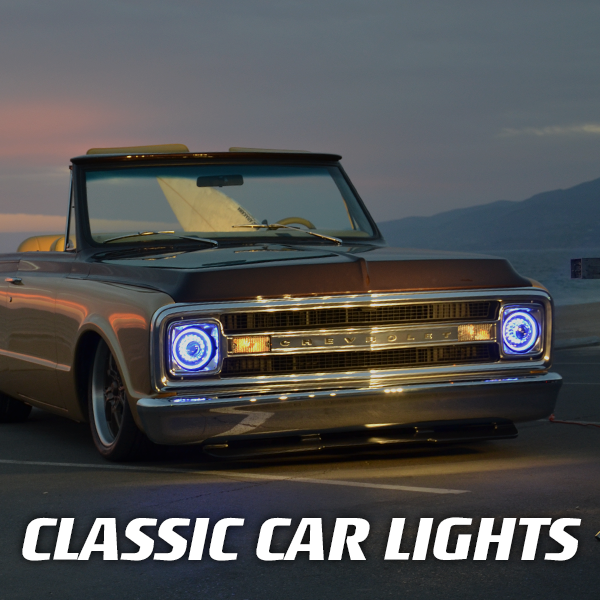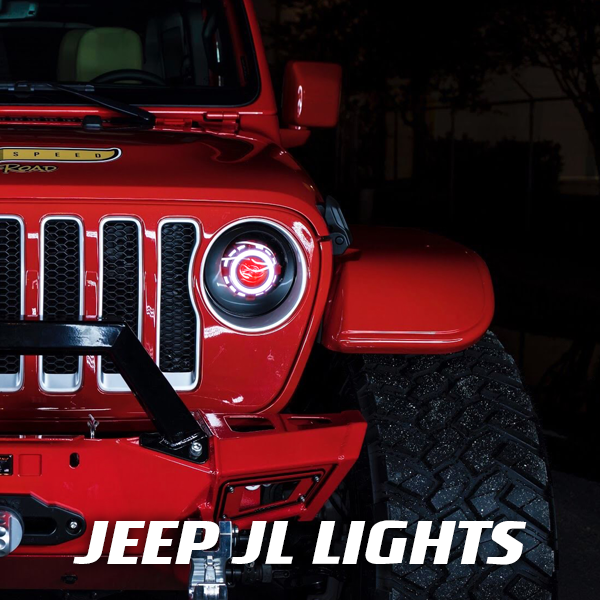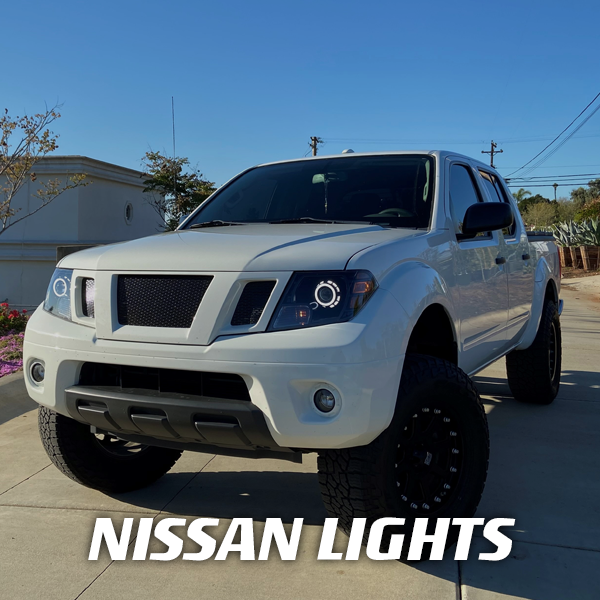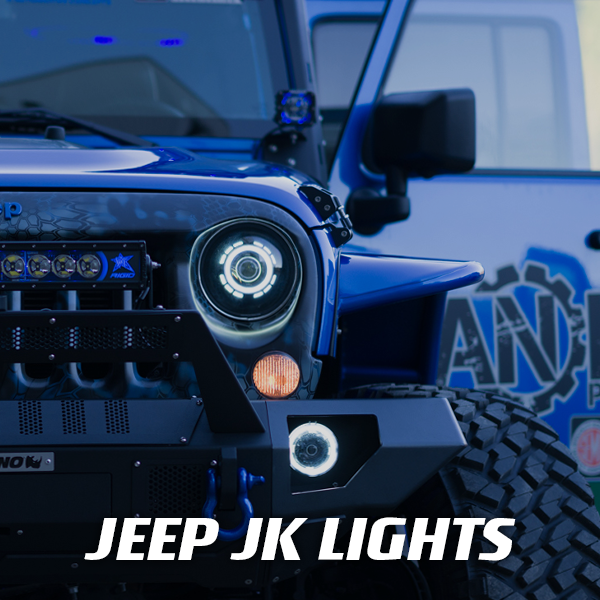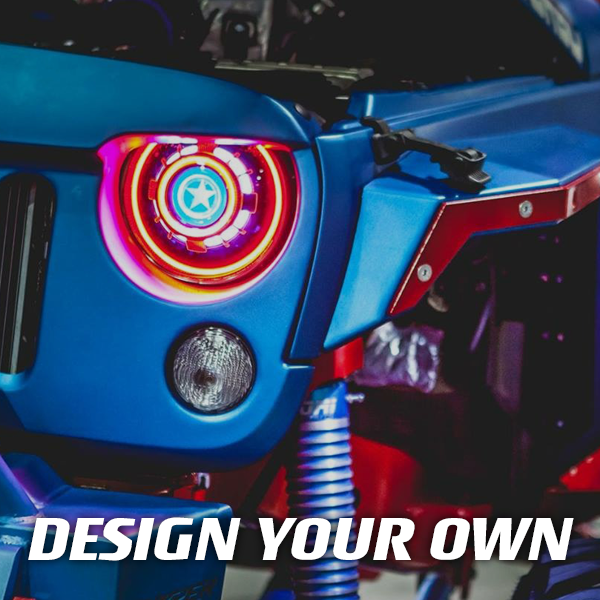Angel eye headlights have become popular for car enthusiasts and manufacturers alike. These distinctive headlights, also known as halo headlights, feature a circular ring of light around the main headlight bulb, creating a captivating and futuristic appearance.
But have you ever wondered what these angel-eye headlights are made of?
What Are Angel Eyes Headlights?
Angel Eyes headlights feature a ring of light that encircles the main headlight bulb. This ring can be illuminated independently of the main headlight, serving as a daytime running light (DRL) or a stylish accent light when the headlights are off. The rings are usually made from light-emitting diodes (LEDs) or fiber optics, each offering different levels of brightness and color options.
Angel Eyes headlights, also known as halo headlights, are a popular automotive lighting accessory that combines functionality with a striking visual appeal. These headlights, first popularized by BMW in the early 2000s, have since become a favorite upgrade for car enthusiasts looking to give their vehicles a distinctive and modern look.
But what exactly are Angel Eyes headlights, and why have they garnered such attention?
The History of Angel Eyes Headlights
Angel Eyes headlights have become synonymous with modern automotive design, particularly for their distinctive glowing rings. These headlights first appeared on BMW vehicles in the early 2000s and have since become a popular aftermarket upgrade for various car models. The history of Angel Eyes headlights is a fascinating journey through automotive innovation, design trends, and technological advancements.
Origins with BMW
The concept of Angel Eyes headlights originated with BMW, which introduced them in the E39 5 Series in 2000. BMW designers aimed to create a unique and recognizable lighting signature that would distinguish their vehicles from others on the road. The halo rings encircling the main headlight bulbs served this purpose perfectly, providing a distinctive look that quickly became associated with BMW’s brand identity.
What are the three types of headlights?
There are three main types of headlights commonly used in vehicles:
1. Halogen Headlights
- Technology: Halogen bulbs use a tungsten filament encased in a glass envelope filled with halogen gas.
- Characteristics:
- Brightness: Moderate brightness.
- Lifespan: Relatively short lifespan compared to other types.
- Cost: Generally the most affordable option.
- Heat: Produce a significant amount of heat.
2. HID (High-Intensity Discharge) Headlights
- Technology: HID bulbs use xenon gas and produce light by creating an electrical arc between two electrodes.
- Characteristics:
- Brightness: Very bright, producing a bluish-white light.
- Lifespan: Longer than halogen bulbs but shorter than LEDs.
- Cost: More expensive than halogen but less so than LED.
- Heat: Produce less heat than halogen bulbs.
- Warm-up Time: Require a few seconds to reach full brightness.
3. LED (Light Emitting Diode) Headlights
- Technology: LED bulbs use semiconductor technology to produce light.
- Characteristics:
- Brightness: Bright and clear light.
- Lifespan: Longest lifespan among the three types.
- Cost: Initially more expensive but can be cost-effective over time due to their longevity.
- Heat: Produce minimal heat.
- Energy Efficiency: Highly energy-efficient, consuming less power.
Each type has its own set of advantages and disadvantages, and the choice between them often depends on factors such as budget, desired brightness, and energy efficiency preferences.
Angel Eye Headlights Made of:
1. LEDs (Light Emitting Diodes)
The primary component of angel eye headlights is the LED technology. LEDs are semiconductors that emit light when an electric current passes through them. They offer several advantages over traditional incandescent bulbs, including higher energy efficiency, longer lifespan, and greater durability. LEDs allow for the creation of bright, uniform, and long-lasting halo rings in angel eye headlights.
2. Polycarbonate or Acrylic Rings:
The circular rings that form the angel eyes are typically made from polycarbonate or acrylic materials. These materials are known for their optical clarity, impact resistance, and flexibility, making them ideal for shaping into intricate designs. Polycarbonate, in particular, offers excellent light transmission properties, ensuring that the halo rings emit a uniform and consistent glow.
3. Aluminum or Plastic Housings:
The housing or frame that holds the LED halo rings and attaches to the vehicle's headlight assembly is usually constructed from aluminum or high-quality plastic. Aluminum is favored for its lightweight yet sturdy properties, while plastic housings are chosen for their cost-effectiveness and ease of molding into complex shapes. Both materials provide the necessary support and protection for the delicate components of the angel eye headlights.
4. Wiring and Circuitry:
Intricate wiring and circuitry connect the LEDs to the vehicle's electrical system inside the angel eye headlights. These components ensure proper power distribution and control, allowing the halo rings to illuminate consistently and synchronize with other lighting functions, such as daytime running lights or turn signals.
5. Sealants and Gaskets:
Angel eye headlights often have sealants and gaskets to protect the internal components from moisture, dust, and debris. These weatherproofing materials help maintain the integrity of the headlights and prolong their lifespan, ensuring that they remain functional and visually appealing under various driving conditions.
Angel Eyes Headlight Design and Functionality
LEDs are the most common choice for Angel Eyes headlights today. They are energy-efficient, long-lasting, and offer a wide range of colors. The brightness and clarity of LED Angel Eyes make them highly visible, enhancing the vehicle's aesthetic appeal and safety.
-
Fiber Optic Angel Eyes
Fiber optics offer a unique look by distributing light evenly along a plastic or glass fiber, creating a continuous light ring. While not as bright as LEDs or CCFLs, fiber optic Angel Eyes have a distinctive appearance and can be an excellent choice for those seeking a softer, more diffused light.
What are the advantages of Angel Eyes headlights?
Aesthetic Appeal
-
Distinctive Look: Angel Eyes provides a unique and modern appearance that sets vehicles apart, giving them a premium and stylish look.
-
Customization: Angel Eyes allows for significant customization in various colors and styles, enabling car enthusiasts to personalize their vehicle's appearance.
Functional Benefits
-
Daytime Running Lights (DRLs): When used as DRLs, Angel Eyes improve the vehicle's visibility during daylight hours, making it easier for other drivers to see the car.
-
Enhanced Nighttime Visibility: The additional light from Angel Eyes can improve nighttime visibility, providing better illumination of the road and surroundings.
Safety
- Increased Vehicle Visibility: Angel Eyes make the vehicle more noticeable to pedestrians and other drivers, potentially reducing the risk of accidents.
- Redundancy: In a main headlight failure, the halo lights can serve as a temporary backup, providing some illumination level.
Energy Efficiency
-
LED Technology: Most modern Angel Eyes use LEDs, which are energy-efficient and have a longer lifespan compared to traditional bulbs. This reduces the strain on the vehicle's electrical system and decreases the frequency of replacements.
Versatility
-
Integration Options: Angel Eyes can be integrated into various vehicle models, either as factory-installed features or through aftermarket kits, making them accessible to many car owners.
-
Multi-functionality: Depending on the installation, Angel Eyes can be used in conjunction with the vehicle's parking lights main headlights, or as standalone DRLs.
Durability
-
Long Lifespan: LED and CCFL technology used in Angel Eyes typically have a long lifespan, reducing maintenance needs and long-term costs.
-
Robust Construction: Designed to withstand various environmental conditions, Angel Eyes are durable and reliable under different driving conditions.
Why Angel Eyes Headlights?
Angel Eyes headlights are a stylish and functional upgrade that can enhance the look and safety of your vehicle. With various types and customization options available, you can find the perfect set to match your style and needs.
Angel eye headlights or halo lights are not just ordinary automotive lighting accessories; they blend advanced technology, innovative design, and high-quality materials.
By incorporating LEDs, polycarbonate/acrylic rings, aluminum/plastic housings, wiring/circuitry, and sealants/gaskets, manufacturers create headlights that enhance the aesthetics of vehicles and improve visibility and safety on the road.



